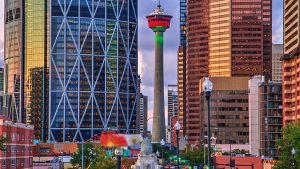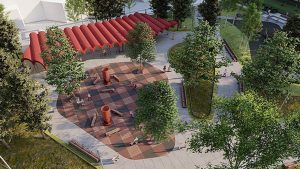Calgary has green-lit an ambitious expansion along the city’s edges.
Calgary City Council voted on July 30 to go forward with building 14 new communities to accommodate growth across the region over the next two decades.
“It’s the first time the City of Calgary has done community planning at this scale,” said City of Calgary manager of growth and strategic services Kathy Davies-Murphy.
“In the past, every four years we would look at specific areas to develop but this is the first time at this scale and with this process.”
The city invited developers to submit business plans to the city, and to show how their plan aligned with that of the municipality as well as demonstrate the financial impact on the community.
The 14 new communities will be located within area structure plans (ASPs) around the city. Four communities will be in Glacier Ridge in the north, two in Keystone Hills and one in East Stoney in the northeast, as well as one in Haskayne in the northwest. Two will be in Belvedere in the east, with two in Rangeview and one in South Shepard in the southeast. One community will be in Providence in the southwest.
“These are full greenfield area with no current development, so we need a full build out of infrastructure for these communities,” Davies-Murphy said.
The city looked at areas that are contiguous to where the city had already invested, she added.
“We looked at what housing stock was available in that area of the city as well as the level of investment required, both by the city and developers. We also looked at how these communities would align with the municipal building plan and Calgary’s transportation plan,” she said.
The new Calgary Ring Road informed their decisions, Davies-Murphy added, as did where the city had previously invested in infrastructure and whether utility and safety services were nearby.
“For example, in the southeast there’s Rangeview, where there’s an interchange that has been funded by the federal and provincial governments and the city as well as a hospital, a fire hall that’s already in the area and a community centre. The area will also eventually be the terminus point for the Green Line LRT,” she said.
In January 2016, Davies-Murphy added, the city introduced an offsite levy bylaw where developers pay charges to the City of Calgary to assist with the cost of offsite infrastructure.
“So growth pays for growth,” she said.
Now that the communities have been approved, she said, the next step is “a lot of planning. We need to remove the growth management overlay (which indicates where growth is occurring in the region) and manage policies that let developers go forward with land use.”
Developers will need to submit outline plans for applications and then apply for permits for stripping and grading, ensure their engineering drawings are confirmed, and then apply for subdivision.
“On the city side, we need to align capital budgets, prioritize infrastructure and then start detailed design and tendering projects,” Davies-Murphy said.
The timeline for building out the new communities will be 15 to 25 years, she said, with an anticipated 115,000 construction jobs. Total infrastructure investment by the city will be $600 million with total private investment of $27 billion.










Recent Comments
comments for this post are closed